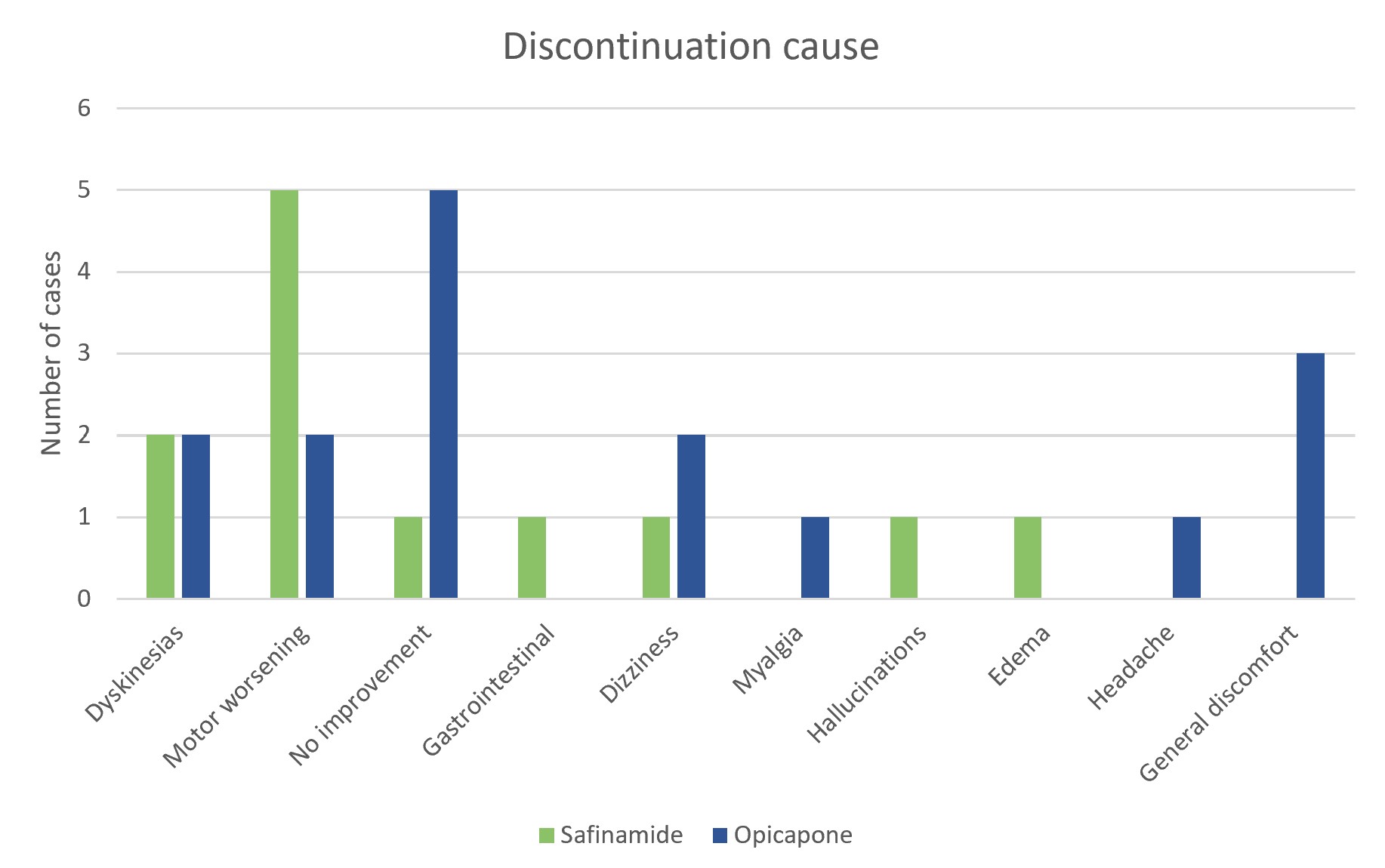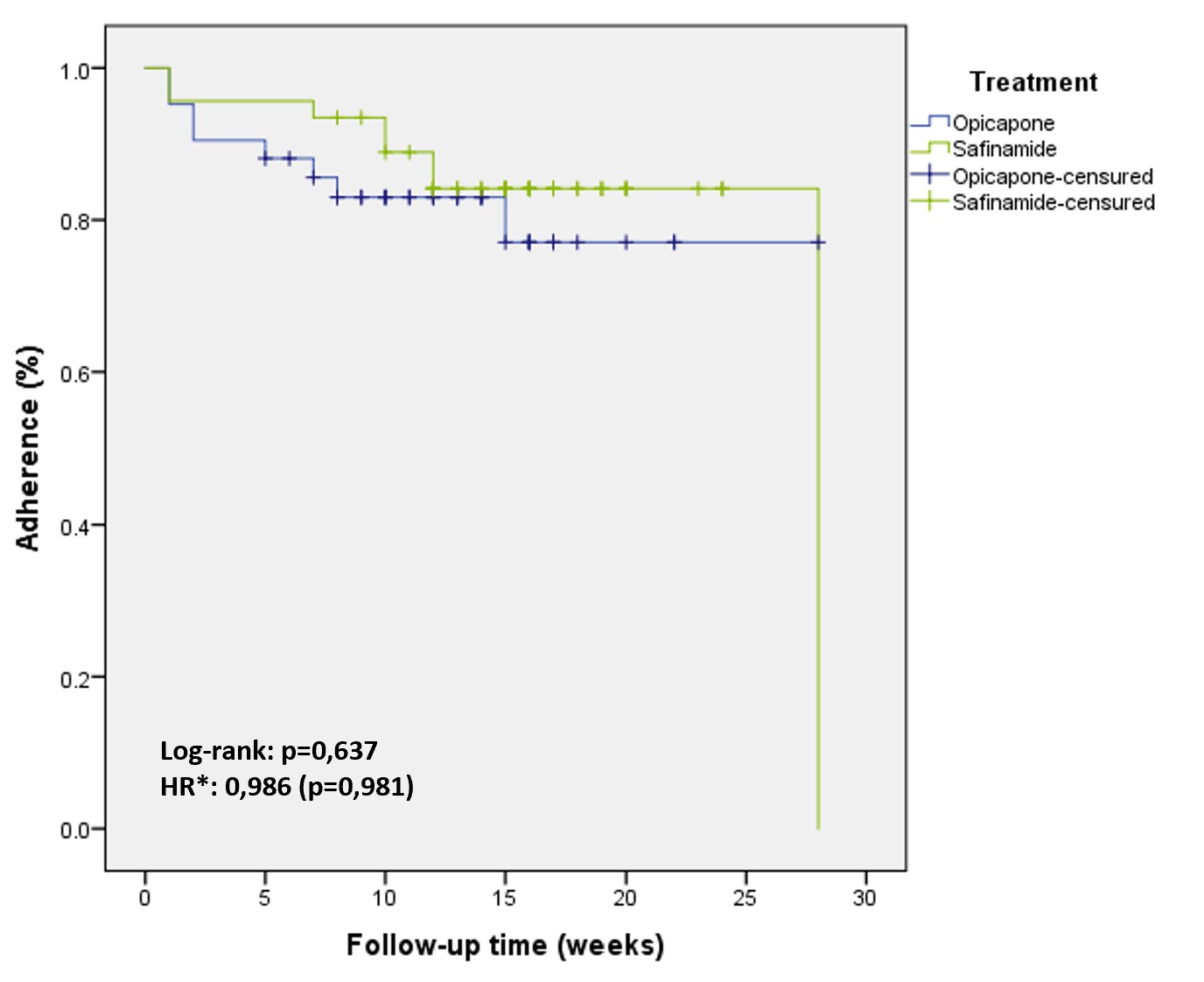Objective: To assess differences in the new onset or worsening of baseline dyskinesia after the introduction of safinamide (SA) or opicapone (OP) as add-on therapy to levodopa in fluctuating patients with Parkinson’s disease (PD), as well as the likelihood of dyskinesia-related discontinuation.
Background: The risk of worsening dyskinesia may be a concern for clinicians when prescribing SA or OP to improve off periods in PD. No comparative studies between the two drugs have been conducted to date.
Method: Retrospective observational study of patients assessed in our Movement Disorders Unit with fluctuating PD (2016-2022), who were started on SA or OP. Baseline clinical and demographic features, new onset or worsening of baseline dyskinesia and adherence to treatment at the first follow-up visit (13-15 weeks) were analyzed. Effectivity was assessed by using the Clinical Global Impression of improvement (CGI-I) scale. Normal distributions were expressed as mean ± standard deviation and non-normal as median and interquartile range, IQR.
Results: Fifty patients with SA and 50 with OP were included, with similar disease duration (7, IQR 4-10 vs 7, IQR 3-11 years, p=0.917), male preponderance (56% vs 50%), but older age in SA group (72±9 vs. 65±12 years, p=0.01). Four patients in SA and 5 in OP group were on advanced PD therapies. 28 (56%) and 23 (46 %) reported to be improved (CGI-I < 4) after the onset of SA and OP respectively (p=0,317) and there were no significant differences regarding new onset or worsening of dyskinesias (16% vs. 20 %, p=0.603). In OP group, levodopa was reduced in 8% of patients (121 ± 63mg), while none of the SA group needed levodopa reduction. There were no significant differences in drug discontinuation (24% vs. 32%, p=0.373). Dyskinesia was the reason for discontinuation in 4% of patients in each group (Figure 1). No significant differences were found for discontinuation probability based on the drug used (OR 0.74, p=0.537), and for the discontinuation rate (HR 0.986, p=0.981; Figure 2).
Conclusion: We found that in our cohort both SA and OP were effective and well tolerated, with a low rate of new onset or worsening of baseline dyskinesias. We found no significant differences between groups. However, a need for levodopa reduction was found in the OP group. Further prospective studies with larger samples are needed to confirm our results.
To cite this abstract in AMA style:
P. Lorenzo-Barreto, I. Pareés, P. Pérez-Torre, S. Fanjul, JL. López-Sendón, F. Pérez-Trapote, A. Sáez-Marín, E. Stiauren-Fernández, á. Patiño-Patón, JC. Martínez-Castrillo, A. Alonso-Cánovas. Dyskinesia and adherence to safinamide and opicapone in fluctuating patients with Parkinson’s disease: observational retrospective study [abstract]. Mov Disord. 2023; 38 (suppl 1). https://www.mdsabstracts.org/abstract/dyskinesia-and-adherence-to-safinamide-and-opicapone-in-fluctuating-patients-with-parkinsons-disease-observational-retrospective-study/. Accessed December 28, 2025.« Back to 2023 International Congress
MDS Abstracts - https://www.mdsabstracts.org/abstract/dyskinesia-and-adherence-to-safinamide-and-opicapone-in-fluctuating-patients-with-parkinsons-disease-observational-retrospective-study/


